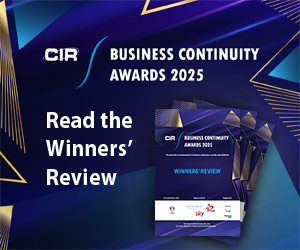As the offshore wind sector sees significant growth and opportunities, the industry faces an increased and varied range of risk, according to a new report by Allianz Commercial. It warns that insurers and developers will need to adapt to the challenges posed by bigger turbines and increased natural catastrophe risks.
In its new report, A turning point for offshore wind, Allianz Commercial highlights growth opportunities, tech innovations, risk trends, and loss patterns for the offshore wind industry as the sector prepares for global growth. Anthony Vassallo, global head of natural resources at Allianz Commercial, said: “Offshore wind farms are highly complex projects. The lessons learned from past losses – which are primarily damage to cables and turbines – are essential for the industry to continue to grow sustainably. Emerging risks need to be explored, too, as developers prepare for widescale deployment of offshore wind around the globe.”
While growth ambitions are huge, all is not plain sailing for developers, according to the report. Spiraling costs have halted major wind projects recently and the industry is impacted by inflation, capital expenses, rising interest rates, and geopolitical instability. The cost of materials and vessel hire have risen, while the supply of materials and access to contractors remains challenging. Supply chain bottlenecks, lengthy permitting procedures and delays to grid connections are also exerting pressure.
In terms of insurance claims, in one of its largest offshore wind insurance markets, Germany and Central Eastern Europe, Allianz Commercial has seen 53% of offshore wind claims by value from 2014 to 2020 relate to cable damage, followed by turbine failure as the second major cause (20%). From the loss of entire cables during transport to the bending of cables during installation, cable losses have incurred multi-million-dollar losses in offshore wind as cable failure can potentially put a whole network of turbines out of commission.
Adam Reed, global leader offshore renewables and upstream energy at Allianz Commercial, said: “Cable risk is critical and therefore the quality of service is vital. Contractors need to provide assurance they have the required expertise to remedy incidents and that they can source replacement components quickly in order to contain losses incurred during downtime.
“From an underwriting perspective, with subsea cabling work insurers pay close attention to the type of cabling used, the kind of vessels involved, the communication between client and contractor, and how often qualified risk engineers will make site visits to oversee proceedings.”
Managing the increasing size of wind turbines is another key challenge Allianz warns. It says that in the last 20 years, they have nearly quadrupled in height – from around 70m to 260m – almost three times taller than the Statue of Liberty in New York. Rotor diameters have increased fivefold in the past 30 years. Wind turbines with capacities of 8 or 9MW are common, but newer models reach 14 to 18MW with a wind farm project in Australia recently announcing plans to use 20MW turbines.
Dr Wei Zhang, senior risk consultant for natural resources, Allianz Commercial, said: “With new technological approaches and an increase in turbine size comes a corresponding increase in risk. We are closely monitoring the many innovations in the offshore wind industry which include prototypical technologies, pilot projects, and evolving standardisation. These new and unproven technologies often come with a lack of technical maturity and data available. By partnering with clients in the early stages of projects, and exchanging knowledge and learnings, all parties will gain a greater understanding of the exposures involved.”
Printed Copy:
Would you also like to receive CIR Magazine in print?
Data Use:
We will also send you our free daily email newsletters and other relevant communications, which you can opt out of at any time. Thank you.











YOU MIGHT ALSO LIKE